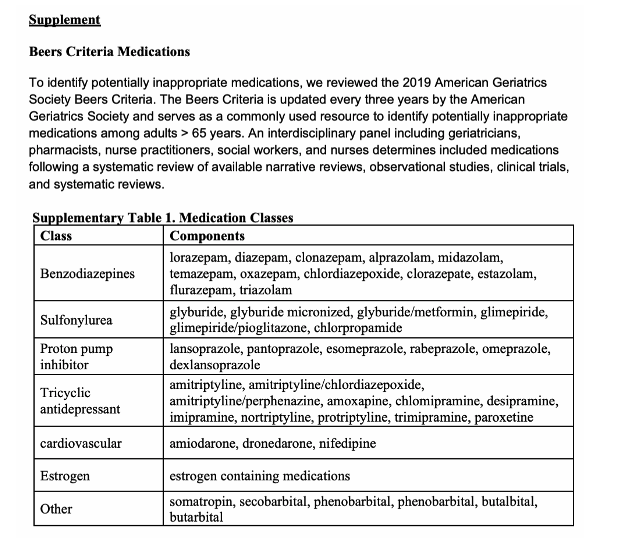| |
Estimating the Use of Potentially Inappropriate
Medications Among Older Adults in the United States
|
| |
| |
Download the PDF here
there were other AGS Beers Criteria list medications that we did not include because they were not based on the highest-quality evidence (e.g., antipsychotics, muscle relaxants, and nonsteroidal anti-inflammatory drugs). The most common medications by number of doses dispensed were PPIs (45%), benzodiazepines (31%), and tricyclic antidepressants (9%).
Abstract
OBJECTIVES
Inappropriate prescribing of medications is common in health care, and is an important safety concern, especially for older adults, who have a high burden of comorbidity and are at greater risk for medication-related adverse events. This study aims to estimate the extent and cost of potentially inappropriate prescribing of medications to older adults in the United States.
DESIGN
A cross-sectional study.
SETTING
Medicare Part D Pre
scription Drug Program data set (2014–2018).
PARTICIPANTS
Older adults who were enrolled in Medicare Part D Prescription Drug Program between 2014 and 2018.
MEASUREMENTS
Potentially inappropriate medications were identified using the 2019 American Geriatrics Society Beers Criteria®.
RESULTS
In 2018, 7.3 billion doses of potentially inappropriate medications were dispensed. The most common medications by number of doses dispensed were proton pump inhibitors, benzodiazepines, and tricyclic antidepressants, and the top five unique medications by reported spending were dexlansoprazole, esomeprazole, omeprazole, dronedarone, and conjugated estrogens. From 2014 to 2018, 43 billion doses of potentially inappropriate medications were dispensed, with a reported spending of $25.2 billion.
CONCLUSION
Potentially inappropriate medication use among older adults is both common and costly. Careful attention to potentially inappropriate medication use and deprescribing when clinically appropriate could reduce costs and potentially improve outcomes among older adults.

|
|
| |
| |
|
|
|